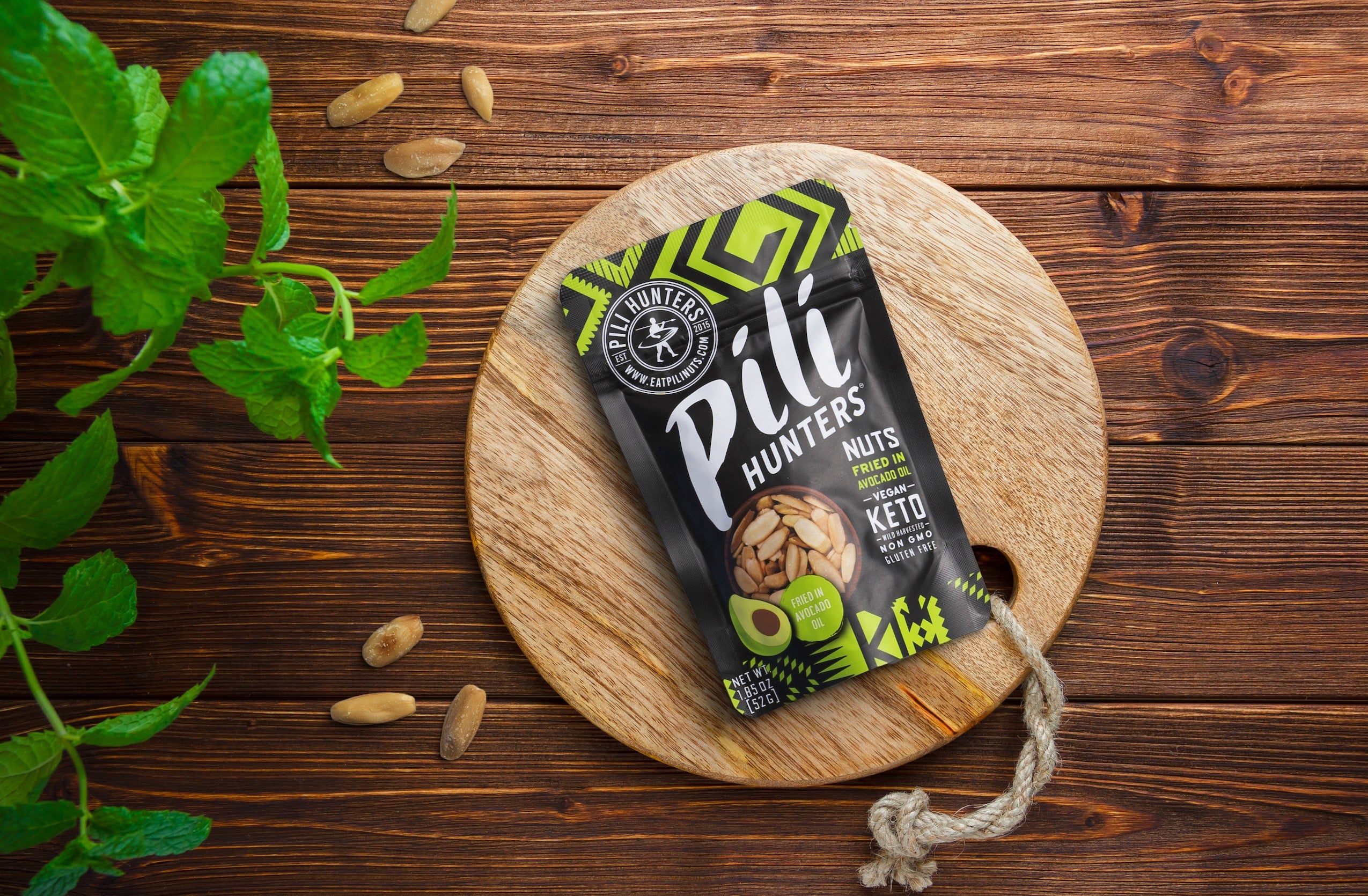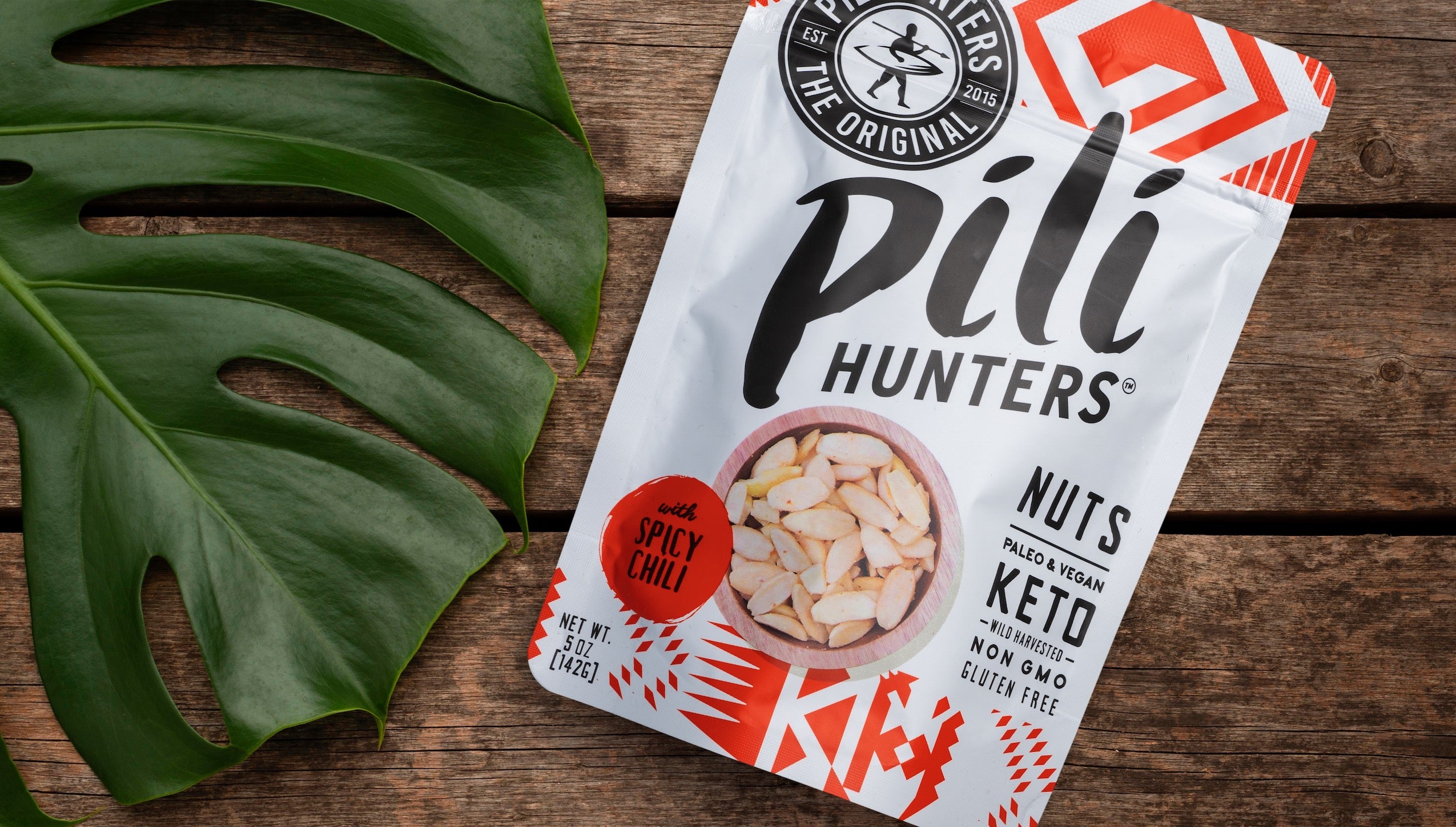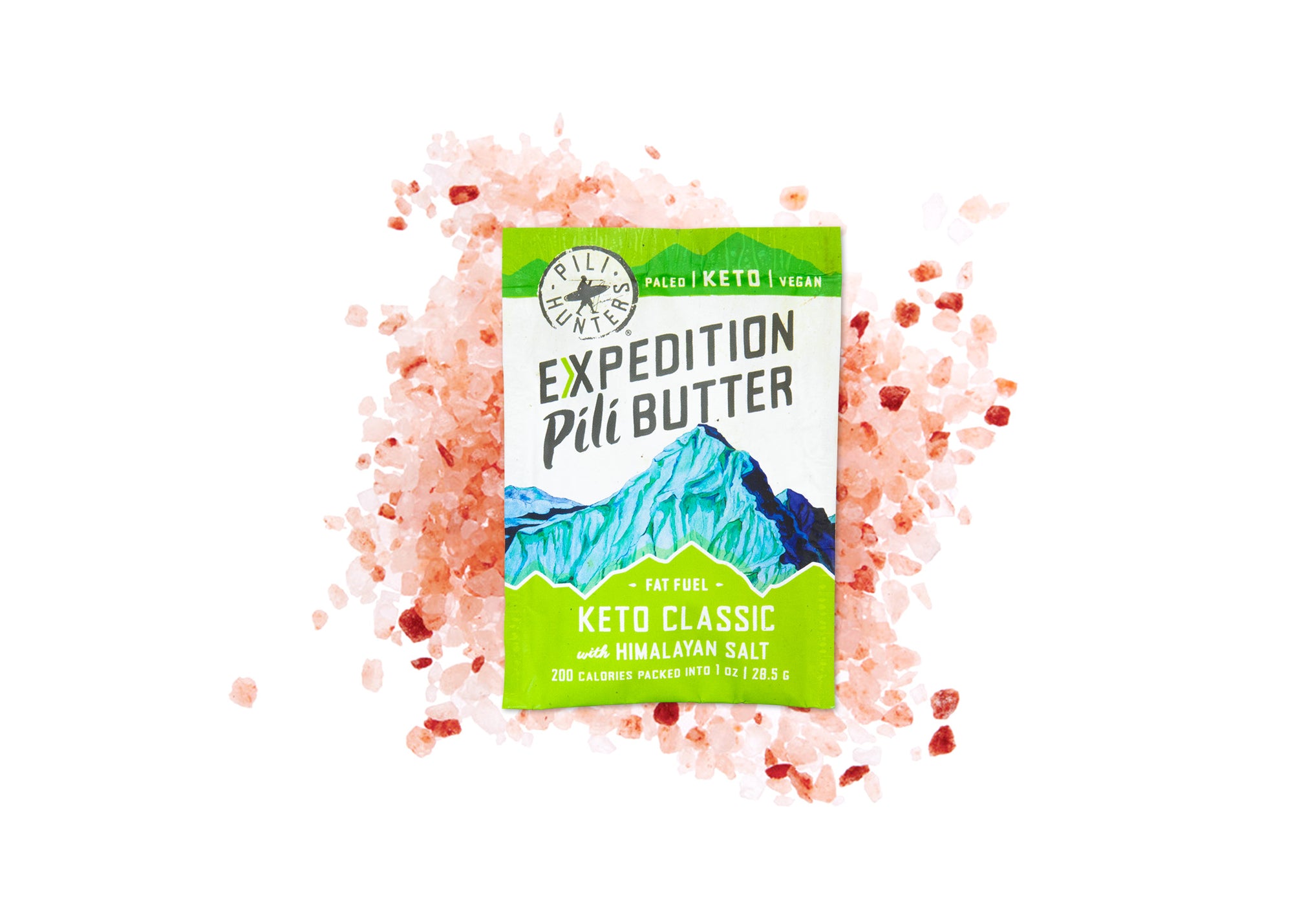At Pili Hunters, after the founder Jason Thomas brought back 10 pounds of pili nuts from the Philippines to the West Coast to share with his kite surfing friends, we quickly discovered that these were the perfect nut for keto diets. Pili nut macros are off the charts when it comes to healthy fat content. In fact, pili nuts have 93% fat content, making them the highest fat whole food on Earth, with a mere 2% of calories from carbs and 5% protein from a complete source. All Pili Hunters' nuts are sustainably hand harvested from the Filipino rain forest, using no artificial irrigation.
⫸93% of the calories in a pili nut comes from fat, the highest proportion of any unprocessed food on Earth.
In comparison, almonds, and by extension, almond flour and almond butter, have only 72% fat and 15% carbs. Even cashews, a favorite ingredient among many products displaying the "keto" logo, contain over 20% of their calories from carbs. That means that if you're trying to nail your keto macros, getting in only 20-50g of carbs/day depending on activity level, if you only ate almond and cashew products, you wouldn't even be in ketosis because of the carb content! (Most keto diets consist of 5-10% carbs).
⫸A theoretical diet of almonds and cashews alone would have too many carbs to facilitate ketosis.
Macadamia nuts, often thought of as the best nut for keto, have 88% fat content with 8% coming from carbs. But, so what, you might be wondering, a 5% difference isn't that huge. Well, when it comes to flavor and texture, it makes a big difference. Pili nuts are far more buttery and creamy than any other nut. What's more, the fat profile of the pili nut is exceptionally good for inflammation control. Let's dive a little deeper into the fat profile of a pili nut and why it matters.
Related: First time to shop Pili Hunters? Check out our free shipping page.
You're probably aware that there is more than one kind of fat and among the marketing literature, you've no doubt come across slogans touting the wonders of omega 3 and that you should avoid saturated fat, or eat more polyunsaturated fat, but don't overdue it on omega 6. Well, let's cut through the tag lines and get to the heart of the matter and demonstrate why pili nuts' healthy fat content really can't be overstated.
Monounsaturated fats
At the chemical level, these fats have long carbon chains bound to hydrogen molecules. A carbon molecule along these chains is considered saturated if every carbon atom has two hydrogen atoms bound to it (or three at the end of the chain). Unsaturated fats have at least one carbon molecule that lacks a hydrogen bond; instead, it has a double bond with a neighboring carbon molecule. In layman's terms, unsaturated fats have a kink in their chain, making them liquid a room temperature whereas saturated fats have completely straight chains, making them solid at room temperature.
Monounsaturated fats have just one double bond along the chain (hence "mono") and polyunsaturated fats (PUFAs) have more than one. Types of monounsaturated fats include Omega 9's (oleic acid) and Omega 7's (palmitoleic acid). Omega 9 fatty acids are a very important anti-oxidant and depending on the sources of omega 3 & 6, can serve as a better shield for your health. This is because omega 3 & 6 can easily become toxic and rancid, causing increased oxidative stress to your body. Ever taken a fish oil pill and were left with putrid fish breath afterward? Your fish oil has gone rancid. If you decide to take a fish oil supplement, be sure to do your research on where to find the freshest sources.
Omega 7 fatty acids are much less discussed yet play a very important role. Without the presence of Omega 7, the anti inflammatory benefits of Omega 3 is highly diminished. In fact, this Cleveland Clinic Study found that over the course of just 30 days, other variables being equal, subjects who took supplemental Omega 7 along with dietary Omega 3s had a 44% reduction in their C-reactive protein markers vs a placebo group. C-reactive protein is a marker in the blood that is strongly associated with bodily levels of inflammation and higher levels are associated with greater risk of heart attack. (1) Omega 7 protects the insulin-producing cells of the pancreas from glucose-induced toxicity and behaves as a shield for Omega 3.
Monounsaturated fats are also an important component to testosterone health and too many PUFAs in the diet can be harmful to testosterone health (2,3).
⫸About 47% of a pili nut's fat is monounsaturated vs 14% from essential PUFAs.
Polyunsaturated Fats (PUFAs)
These fats tend to get the most attention to their health benefits, but for those truly in tune with their health, you should know that the sourcing and processing of these fats is very important. As mentioned previously, PUFAs are far less stable than other types of fats and heavily processed PUFAs (I'm looking at you, vegetable, soybean, canola, safflower, sunflower, cottenseed, and corn oils), are so damaging to the body, it's literally like eating radiation.
Omega 3 fats (that haven't gone rancid or haven't be oxidized) act as an anti-inflammatory by activating certain types of prostaglandins (compounds that regulate inflammation), resulting in lower inflammation. Omega 6 fats activate a different type of prostagalndin that is pro-inflammatory (4); while this is an important process in acute damage repair, the issues arise when this response become chronic. A lifestyle that includes too much stress from work, foods cooked in processed vegetable oils, and isolation from friends and family is a lifestyle riddled with chronic inflammation. While both of these fatty acids serve a host of other functions in the body, it's very important that levels of Omega 6 are kept in check so that inflammation doesn't run rampant. One of the many reasons to avoid the aforementioned processed PUFAs is that their Omega 3:6 ratio is heavily favored toward inflammatory Omega 6's.
⫸Pili nuts, still in their wild, natural form, have a nearly perfect ratio of Omega 3's and Omega 6's for the human body, making them highly anti-inflammatory.
Saturated Fat
I'll start with reinforcing that contrary to longstanding guidelines, consumption of saturated fat DOES NOT result in higher risk of America's number one killer, coronary heart disease (5,6,7,8). Saturated fat is a critical for maintaining myelin sheaths (the layer that wraps around nerve cells facilitating good nervous system function), immune system maintenance, and half of our cell membrane structure is made of saturated fat (9). Often, saturated fats are preferred for cooking because they aren't as volatile as PUFAs and have a higher smoke point, meaning you can cook with them at higher temperatures without risking them oxidizing and burning.
⫸Pili nuts are a fantastic source of saturated fats; about 39% of the fat content in Pili Hunters' nuts is from saturated fats. Pair that with their extremely high vitamin E (which is fat soluble) content, and you have a potent package full of bioavailable minerals.
Pleas take a look at Healthy But Smart for some more info on Saturated Fat Health Claims.








